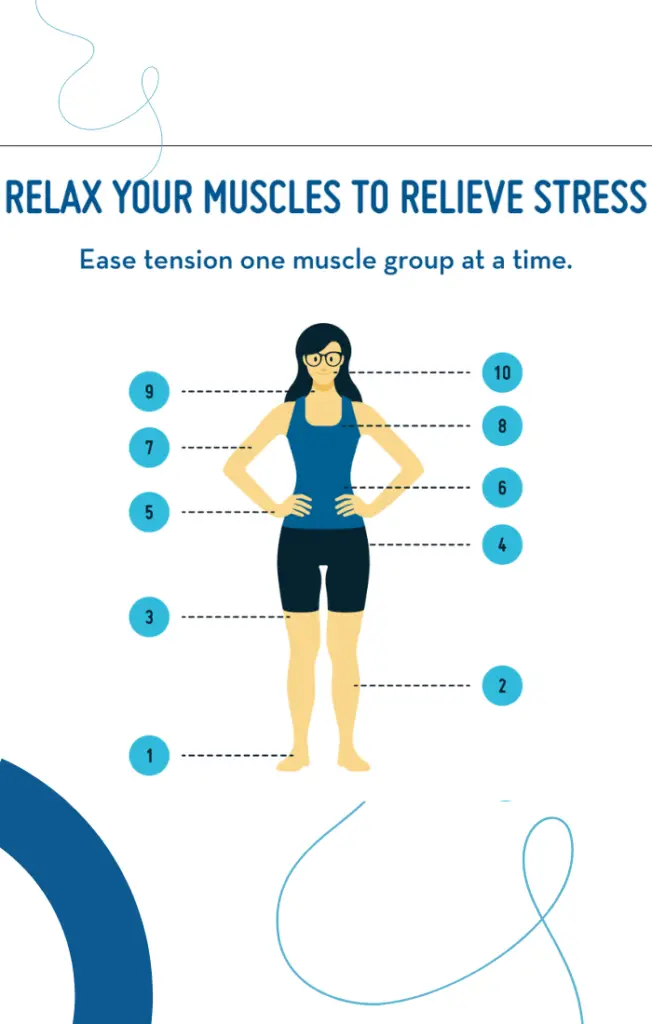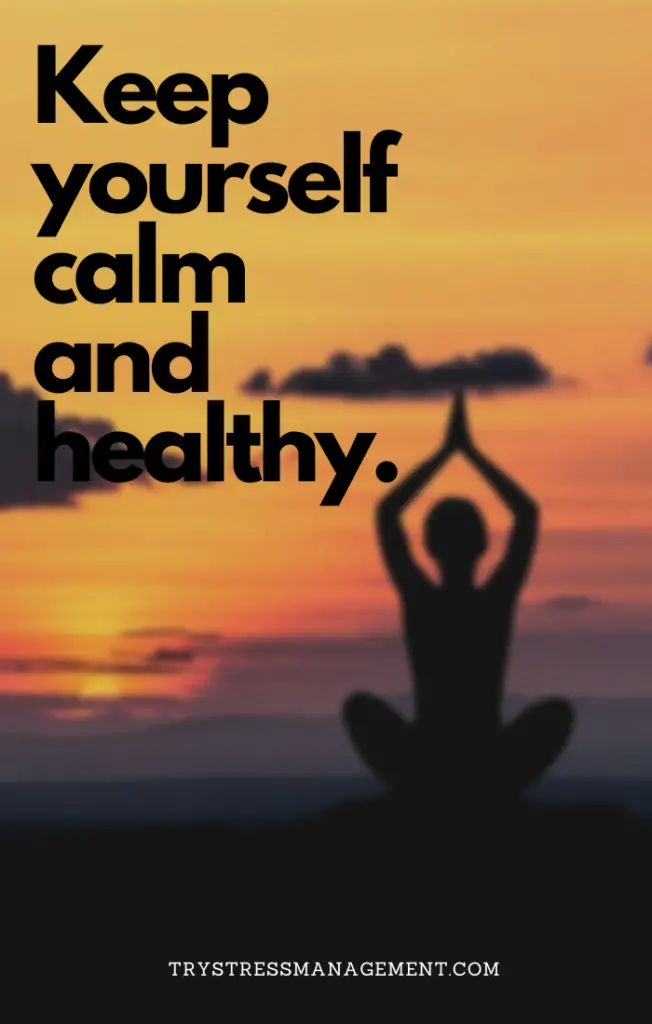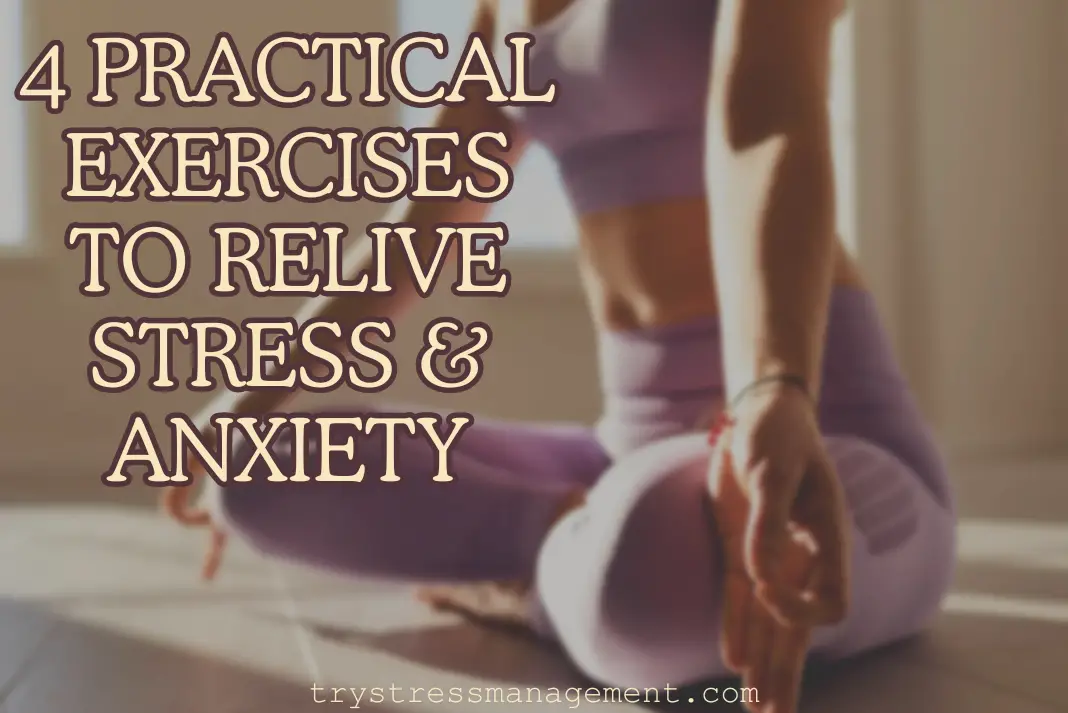In the fast-paced chaos of today’s world, stress and anxiety have become unwelcome companions for many. The toll on our mental and physical well-being is undeniable. However, amidst the hustle, there exists a sanctuary—a collection of effective exercises to relieve stress and anxiety. In this guide, we’ll embark on a journey to “Unwind Your Mind,” exploring practical and powerful exercises designed to alleviate stress and anxiety. Let’s delve into the art of relaxation and rediscover the tranquility that lies within.
Table of Contents
Understanding Stress and Anxiety
In the intricate tapestry of human experience, stress and anxiety emerge as common threads that weave through our lives. Stress, often a response to external pressures or demands, can manifest in various forms, propelling us into a state of heightened alertness. On the other hand, anxiety, a close companion to stress, tends to linger—an uninvited guest in the mind, casting shadows of worry and unease.
To comprehend these nuanced states, it’s essential to distinguish between them. Stress, in its transient nature, can be a motivator, urging us to navigate challenges. However, when chronic, it transforms into a silent adversary, impacting our well-being on multiple fronts. Anxiety, while sharing the roots of stress, extends its reach into a persistent sense of apprehension, often with no apparent cause.
Both stress and anxiety intertwine with our mental and physical landscapes, affecting sleep, concentration, and overall quality of life. Understanding these states is the first step toward reclaiming control—a journey we embark upon to unravel the intricacies of stress and anxiety and explore avenues for effective relief.
Mind-Body Connection in Stress Relief
In the intricate dance of well-being, the mind and body are not mere spectators but active participants. The profound interplay between mental and physical realms becomes particularly evident when seeking relief from the grips of stress.
The mind, a powerful orchestrator of thoughts and emotions, communicates intimately with the body. When stress takes center stage, this communication often results in tangible physical responses—an increased heart rate, tense muscles, and a cascade of hormones preparing the body for action.
Understanding the mind-body connection in stress relief opens the door to holistic approaches that address both aspects. By nurturing mental well-being, we influence the body’s responses and vice versa. This section delves into the symbiotic relationship between mind and body, laying the groundwork for effective strategies to alleviate stress and restore equilibrium.
Practical Exercises to Relieve Stress and Anxiety
A. Deep Breathing Techniques
Amid the hustle and bustle of life, the simple act of breathing deeply can be a powerful antidote to stress. Deep breathing exercises are a cornerstone of stress relief, offering a direct pathway to calm the mind and soothe the body.
- Begin by finding a comfortable seated or lying position.
- Place one hand on your chest and the other on your abdomen.
- Inhale slowly through your nose, allowing your abdomen to expand.
- Exhale through your mouth, ensuring a gentle and prolonged release of air.
- Focus on the rise and fall of your abdomen, allowing each breath to be deliberate and unhurried.
- Inhale quietly through your nose for a count of four.
- Hold your breath for a count of seven.
- Exhale completely through your mouth for a count of eight, producing a soft whooshing sound.
- Repeat this cycle for several breaths, gradually increasing the count as comfort allows.
- Inhale through your nose for a count of four.
- Hold your breath for a count of four.
- Exhale completely through your mouth for a count of four.
- Pause and hold your breath for another count of four.
- Continue this rhythmic pattern, creating a “box” shape with the breath.
These deep breathing techniques tap into the body’s natural relaxation response, slowing the heart rate, lowering blood pressure, and signaling to the mind that it’s time to unwind.

B. Mindfulness Meditation
In the sanctuary of the present moment, mindfulness meditation emerges as a profound practice to alleviate stress and invite a sense of calm. Grounded in the principles of awareness and acceptance, mindfulness redirects our focus from the chaos of thoughts to the serenity of the now.
Getting Started:
- Find a quiet space where you won’t be disturbed.
- Sit or lie down in a comfortable position.
- Gently close your eyes or maintain a soft gaze.
Focus on the Breath:
- Direct your attention to the natural rhythm of your breath.
- Notice the sensation of each inhalation and exhalation.
- If your mind wanders, gently guide it back to the breath without judgment.
- Bring awareness to different parts of your body, starting from your toes and moving up to the crown of your head.
- Notice any tension or sensations, allowing them to exist without attachment.
- Gradually release tension with each exhale.
Mindful Observation:
- Engage your senses by observing your surroundings.
- Notice the colors, sounds, and textures without labeling or analyzing.
- This practice fosters a non-judgmental awareness of the present moment.
Loving-Kindness Meditation:
- Extend well-wishes to yourself and others.
- Silently repeat phrases like “May I (or they) be happy, may I (or they) be healthy, may I (or they) be safe, may I (or they) live with ease.”
- Cultivate feelings of compassion and connection.
C. Progressive Muscle Relaxation (PMR)
In the realm of stress relief, Progressive Muscle Relaxation (PMR) stands as a powerful ally, offering a tangible method to release physical tension and ease the mind. Rooted in the principle of systematically tensing and relaxing muscle groups, PMR is a structured yet accessible technique.
Preparation:
- Find a quiet and comfortable space to sit or lie down.
- Take a few deep breaths to settle into the present moment.
- Prepare to focus on each muscle group, one at a time.
Tension and Release:
- Begin with your toes. Curl them tightly for a few seconds, then release.
- Gradually move up through different muscle groups—calves, thighs, buttocks, abdomen, shoulders, arms, and neck.
- Tense each group for about 5-10 seconds and then release, allowing the muscles to relax completely.
Mindful Sensation:
- As you tense and release each muscle group, pay attention to the sensations.
- Notice the contrast between tension and relaxation.
- Allow yourself to experience the calming effect as tension dissipates.
Full-Body Integration:
- Once you’ve worked through all muscle groups, take a moment to focus on your entire body.
- Embrace the sense of overall relaxation and release any residual tension.
Regular Practice:
- Incorporate PMR into your routine, especially during moments of heightened stress.
- With practice, you’ll become more adept at recognizing and releasing tension promptly.

D. Yoga for Stress Relief
In the ancient practice of yoga, we find a holistic approach to stress relief, intertwining breath, movement, and mindfulness. The art of yoga transcends physical exercise, offering a pathway to inner serenity and resilience in the face of life’s demands.
Centering Breath:
- Begin in a comfortable seated position, focusing on your breath.
- Inhale deeply, expanding your chest and abdomen.
- Exhale slowly, releasing tension and grounding yourself in the present moment.
Gentle Warm-up Poses:
- Transition into gentle warm-up poses, such as neck rolls, shoulder stretches, and spinal twists.
- These movements help release tension and prepare the body for deeper postures.
- Kneel on the mat, sit back on your heels, and extend your arms forward.
- Rest your forehead on the mat, allowing your spine to lengthen.
- Breathe deeply, surrendering to a sense of relaxation.
Downward-Facing Dog (Adho Mukha Svanasana):
- From a hands-and-knees position, lift your hips toward the ceiling, forming an inverted V shape.
- Ground your palms and heels while lengthening your spine.
- Feel a stretch through the back of your legs and spine.
Corpse Pose (Savasana):
- Lie on your back, arms at your sides, palms facing up.
- Close your eyes and focus on your breath, allowing your body to absorb the benefits of your practice.
- This final relaxation pose promotes a profound sense of peace.
Incorporating Stress-Relief Exercises into Daily Life
Set Daily Reminders:
- Use alarms or smartphone notifications to prompt regular stress-relief exercises.
- Establish a routine that aligns with your schedule, making it a seamless part of your day.
Micro-Breaks at Work:
- Integrate short stress-relief exercises during work breaks.
- Simple deep breathing, stretching, or mindful moments can be done discreetly at your desk.
Walking Meditation:
- Turn your daily walks into mindful experiences.
- Focus on your breath and surroundings, allowing the rhythmic movement to alleviate stress.
Bedtime Rituals:
- Create a calming bedtime routine that includes relaxation exercises.
- Wind down with gentle stretches, deep breathing, or a few minutes of mindfulness.
Mindful Eating:
- Transform mealtime into a mindful practice.
- Engage your senses, savor each bite, and appreciate the nourishment, turning eating into a stress-relief ritual.
Incorporate Yoga into Daily Activities:
- Integrate yoga stretches into daily tasks like brushing your teeth or waiting for the kettle to boil.
- These micro-yoga moments contribute to overall relaxation.
Express Gratitude:
- Take a moment each day to reflect on what you’re grateful for.
- Cultivate a positive mindset, which can counteract stress and enhance overall well-being.
Technology Detox:
- Designate tech-free periods during the day.
- Disconnecting from screens helps reduce mental clutter and promotes relaxation.
Create a Dedicated Space:
- Designate a stress-free zone in your home.
- Whether it’s a corner with cushions or a comfortable chair, having a dedicated space can signal the start of a stress-relief session.
Combine Activities:
- Multitask with stress-relief exercises during other activities.
- For example, practice deep breathing while waiting in line or perform gentle stretches while watching TV.
Incorporating stress-relief exercises into daily life doesn’t require a significant time investment. These small, intentional moments can collectively contribute to a more balanced and stress-resilient lifestyle.


